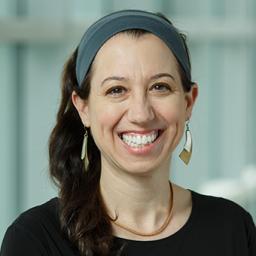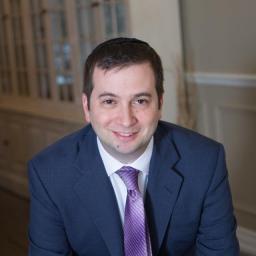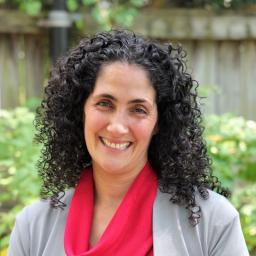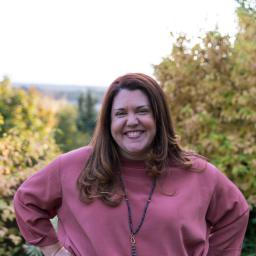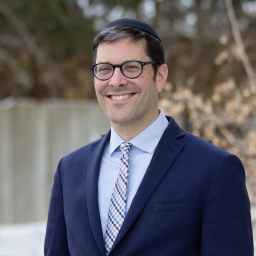For many educators today, teaching about Israel in the classroom has never been so daunting. With attitudes on Israel dovetailing with political affiliation, the emotionally intense tone of the conversation, and educators’ reluctance to address difficult conversations due to potential repercussions among the parent body and community, there are no shortage of reasons why educators hesitate to bring Israel into the classroom.
All of this has become even more challenging with the seemingly never-ending headlines coming out of Israel over the last few months, from painful terrorist attacks and rocket fire, to riots in Huwara, and the polarizing judicial reforms and subsequent protests. These complicated events are difficult enough even for the expert educator to explain, and the emotional feelings on each side make that task more challenging.
How should we as educators approach teaching Israeli current events in the classroom? How can we authentically model nuance and balance when we may have strong feelings about the issues we are teaching about?
Here, we explore four suggestions for how to lean into these challenges and successfully teach Israeli current events in the classroom.
Suggestion #1: Cultural Literacy
Let’s start with the basics. As educators, we need to have a deep understanding of Jewish and Israeli history in order to impart and empower this deep knowledge to our students.
How many Jews in North America have heard of the Titanic yet never heard of the Altalena? How many of our students can tell you all of Lebron James’s statistics but have not heard the inspiring story of legendary American-Israeli basketball player Tal Brody?
Let’s dive deeper. Do our students know about the moral complexities and historical narratives surrounding what took place back in 1948 in Deir Yassin? Can college-bound students speak intelligently about the deep Jewish connection to settlements and at the same time have empathy for the Palestinian experience in the West Bank?
In order for our young people to be able to have serious conversations about Israel, they need to know its history. If we are asking them to be Zionists, they need to know what Zionism represents. This is applicable whenever we are teaching about Israel, but it is especially true when engaging with current events.
With regard to the events in Huwara, students need to first know the facts. Where is Huwara located on the map? Why are Israeli Jews driving through this Palestinian village? What’s the history of tensions between Israelis and Palestinians in this area?
As for the judicial reform, let’s first ask why doesn’t Israel have a constitution? How does Israel’s political and judicial system work? What exactly is included in the proposed judicial reforms?
Concerning the conflict surrounding the Temple Mount, students need to understand who controls the Temple Mount, what led to the current status quo, what’s led to the recent violence, and what is the significance of the Temple Mount to both Jews and Muslims.
Let’s teach these facts divorced from our various emotional reactions. Doing this allows our students to rise above the noise and have the cultural literacy necessary to understand these current events.
Suggestion #2: Diversity and Perspectives
As Jewish educators, many of us naturally feel the pull to be activists with our students in order to have a positive Jewish influence on them. However, when we’re doing education, the focus should be education, not activism. That’s why we believe in using a Mikraot Gedolot approach to teaching Israeli current events, which models sharing a diversity of perspectives from different Zionist thinkers, much like the discussion and debate you will find between medieval Biblical commentators.
Of course, each individual school and institution’s Mikraot Gedolot will look different, with each having their own red lines about which perspectives are included and which are left out. However, if we leave out the perspectives that challenge us, our students will not be prepared to engage in these difficult conversations at their high schools, colleges and workplaces. Creating an atmosphere where students can see a wide range of viewpoints on the current events will allow for nuanced and complex classroom discussions to take place, bringing the famous quote “Two Jews, three opinions” to life.
When it comes to the events in Huwara, let’s showcase the different Twitter responses to the violence along with commentary. When it comes to judicial reforms, let’s present the multiple perspectives on the various proposals and the various reactions within Israeli society. Only after presenting multiple perspectives on these issues can our students authentically grapple with the questions being debated and be able to form their own informed opinions.
Suggestion #3: Reflection and Empathy
One of our most important mottos is that there is no learning without reflection. Creating time for student reflection is especially important when we are discussing complex current events that can raise difficult questions for students that in some cases can challenge their ethical and moral expectations for the State of Israel. Students need time to process their emotions, and educators can facilitate this through class discussions and prompts that encourage students to grapple with essential questions that these current events bring up. Educators should also set aside time for meetings outside the classroom, for students who need extra time for continued discussion as they work through these challenges.
Furthermore, it is important to encourage students to consider alternative perspectives to their own, fostering empathy for those with whom they disagree. Let’s invite our students to put themselves in the shoes of the different people involved in each of the current events, whether that is pro- or anti-judicial reform protesters, the Palestinians, Haredim, secular Israelis, Jewish settlers, new immigrants to Israel, or another group. This reinforces for our students that debates over Israel do not need to be a zero-sum game, but one can hold a strong opinion while still having empathy for various parties involved.
Finally, it is also important to teach about the painful current events, as this provides an opportunity to emphasize the importance of Jewish peoplehood and what it means to be part of one nation. Learning about terror attacks and communities living under rocket fire can help students foster a deep sense of connection with their brothers and sisters in Israel and share in the pain felt all over Israel when multiple pairs of siblings were killed in terror attacks. Educators can share excerpts from Rabbi Leo Dee’s eulogies for his daughters Maia and Rina z”l, and the message of Esti Yaniv after the death of her sons Hallel and Yagel z”l.
Students can discuss questions such as, What is the responsibility of Diaspora Jews when such terrible attacks occur in Israel? How can we share in Israel’s pain from afar? How might the strength and resilience of these bereaved families embody the spirit of the Jewish people
Suggestion #4: Practical Helpful Resources
Over the last several months, we at Unpacked for Educators have been hard at work creating video and podcast content along with accompanying educational resources based on the principles outlined above to assist you in teaching about Israeli current events. Our recently launched YouTube channel Today Unpacked helps students rise above the noise of current events in Israel and the Jewish world to provide history, context, diversity of perspectives and an opportunity for reflection through educational framing. Today Unpacked is released each week with an accompanying article and student prompts that you can use with your students in a timely fashion.
In addition to the timely content on current events, you can always use our content to do a deep dive into Israeli history, the history of Zionism, and the Israeli-Palestinian conflict (amongst other topics). Through our partnership with Prizmah, our collaborative schools connect through our Unpacked for Educators Reshet, a space where they can process the news from Israel and share best practices on teaching current events with Israel educators from around the world.
Often, teaching Israel can feel overwhelming, especially when we are striving to balance nuance and complexity with inspiring a meaningful connection to the State of Israel in our students. As it says in Pirkei Avot (Ethics of the Fathers) 2:16, “It is not your duty to finish the work, but neither are you at liberty to neglect it.” On one hand, you don’t need to solve every complex headline coming out of Israel for your students. Distilling the big questions and essential ideas from a current event allows us to have ongoing discussions with our students about the most important issues in Israel. This can include conversations on religion and state, Israel’s Jewish and democratic identities, and balancing Israel’s security with respect for rights of the Palestinians. At the same time, these conversations are too important to neglect, and we owe it to our students and ourselves to lean in to these topics and start the discussion.
Educators Speak: Addressing the Problem and Sharing Solutions
- Teaching about the current political crises—plural—in Israel is extremely complicated, as one needs a strong background to even discuss the quick moving and multiple events. One of our tools is to return to various background videos and weekly letters from Unpacked, revisiting the structures and history of how we got here and why it matters to us. Dr. Neil Rubin, Beth Tfiloh Dahan High School, Baltimore, MD
- The challenges we are facing as Israel educators today are twofold. On the one hand, we want to approach Israeli history and current events with nuanced and sophisticated lenses, to help our students see all sides of a situation, whether it’s the religious-secular divide in Israeli society, the Israel-Palestinian conflict, or the proposed judicial reforms. On the other hand, we want to instill or continue to instill a meaningful attachment to and responsibility for the State of Israel and the Zionist project. Holding these two approaches requires sensitivity, investment, and a deep understanding of the issues. At the end of the day, cognitive and affective Israel education in Jewish day schools needs teachers who themselves are grappling with the challenges Israel faces today and also love Israel—and are invested in Israel’s wellbeing. Rebecca Wolf, SAR High School, RIverdale, NY
- One of the challenges has been that a lot of the major political leaders who have been very public (Yariv Levin, Itamar Ben-Gvir, Bezalel Smotrich) are far less familiar to students than Benjamin Netanyahu, Aryeh Deri and Yair Lapid. We’ve spent some time unpacking the Israeli political system beyond the basics, including the historical relationship between the Coalition(s), the Knesset as a whole and the Supreme Court, and students have been able to make connections between aspects of the US political system and the Israeli one as a strong point of entry to begin conversations. This has allowed students to contextualize why Israelis are so actively engaged in this process as well as to how this will affect the relationship between Israel, Israelis and the rest of the world. Jeremy Yoskowitz, Frankel Jewish Academy, West Bloomfield, MI





